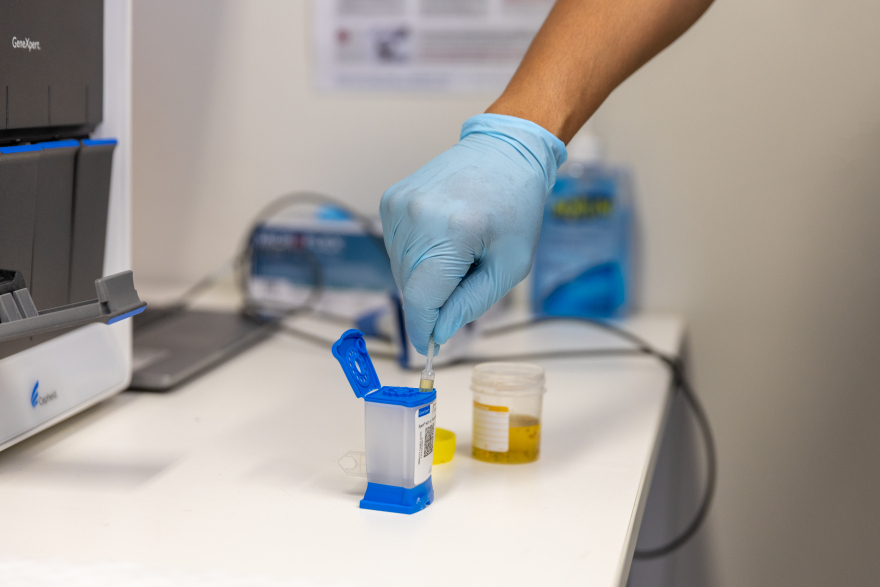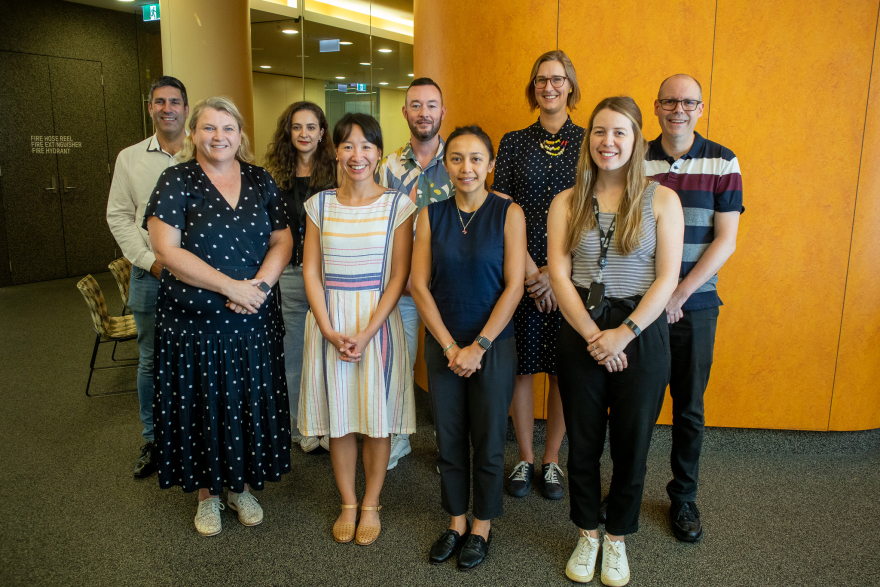Treatments for infectious diseases like hepatitis C, sexually transmissible infections and COVID-19 are incredibly effective. They prevent poor health outcomes for individuals, and they prevent onward spread of disease in the community.
But treatments cannot cure disease among people who are not adequately engaged with the health system. To drive down infectious diseases in Australia, we need to ensure all Australians are able to access timely diagnosis and treatment.
Diagnostic technologies provided at the 'point-of-care' provide a more accessible testing alternative. The Kirby Institute is working with local communities across Australia on how best to implement these life-saving health solutions.
This innovative work is conducted in partnership with Flinders University International Centre for Point-of-Care Testing, community organisations, and other stakeholders and last year received further significant funding support from the Australian Government.
The funding supports the continuation and expansion of two major national programs of work led by the Kirby Institute: The Australian Hepatitis C Point-of-Care Testing Program, led by Professor Jason Grebely, and the First Nations Molecular Point-Of-Care Testing Program, led by Professor Rebecca Guy, over two years.
“Point-of-care testing is revolutionising the way we test and treat infectious diseases among marginalised populations, such as First Nations Australians, people who inject drugs, and people who are incarcerated. It's essentially bringing clinics and laboratories outside of the hospital and into the places where the people who need to access the service actually are,” explains Prof Jason Grebely, who leads the Australian Hepatitis C Point-of-Care Testing Program.
“Before, test results could take weeks to be returned to patients, at which point they may no longer be engaged in the health system. Using this highly accurate testing technology, we can test for an infection or infections, interpret the results and, if needed, initiate treatment, all within one visit. This is a game-changer when working with marginalised or remotely located population groups. It simplifies the pathway to treatment, and interrupts transmission by getting people onto treatment quicker."
Point-of-care testing in these programs involves collecting either a finger stick blood specimen, a swab from the oral or genital area, or in this case a urine test – and placing it into a GeneXpert cartridge for testing in the machine, which takes around an hour to process the specimen and deliver a result.
Australian Hepatitis C Point-of-Care Testing Program
In Australia, there are 74,000 people living with hepatitis C, and most of these people are unaware that they have it. Many people who are at risk of hepatitis C are from marginalised populations groups (such as people who inject drugs and people who are incarcerated). These groups are often neglected by traditional health services.
“Point-of-care testing addresses this because it allows us to bring the lab to the places where people who are at-risk already are, such as drug treatment clinics, needle and syringe programs, community health centres, prisons and community-led organisations,” says Prof Grebely. “The program is designed to scale-up point-of-care hepatitis C testing to get these people onto curative treatment and ultimately eliminate hepatitis C in Australia."
“We're exceptionally pleased the government is investing in this program's life-saving potential."
In the first phase of the program, nearly 40,000 tests were performed, 3,613 were diagnosed with hepatitis C, and 2,557 have initiated treatment.
The Kirby Institute National HCVPOCT Program Team (from left to right, Jason Grebely, Susan Matthews, Samira Hosseini Hooshyar, Elise Tu, David Silk, Maria Martinez, Becca Henry, Stephanie Davey, and Corey Markus).
The additional funding will facilitate the expansion of the program to 110 sites (at more than 400 testing locations) across Australia, resulting in approximately 100,000 tests by 2026. These include diverse locations such as drug treatment clinics, prisons, Aboriginal Community Controlled Health Organisations, mobile outreach clinics, homelessness services and mental health facilities.
Infectious disease rates are unacceptably high for many First Nations communities in rural and remote settings due to a range of factors, including isolation from health services. The First Nations Molecular Point-of-Care Testing Program has been designed to address the limited access of First Nations people to testing and treatment through offering point-of-care testing at more than 110 rural and remote clinics across Australia.
One of the clinics where the program is being implemented is 1,600km by road from the nearest pathology centre.
The new funding will allow the continuation and expansion of the national program, including increasing the number of infectious diseases that can be tested for.
Currently, some sites are currently set up to test for SARS-CoV-2, influenza A, influenza B and respiratory syncytial virus (RSV), while others are set up to test for chlamydia, gonorrhoea and trichomonas vaginalis. More than half are testing for all seven infections.
“Over the course of the next two years, we plan to expand both the number of sites testing for both and number of tests performed. We are keen to explore new opportunities for community members and primary care staff to be trained in the technology in their own clinics. In addition, in partnership with NACCHO, we are planning to expand the choice of test types to include new priority infections for their populations,” says Prof Guy.
The program is governed by The First Nations POC Testing Leaders Group, which provides cultural oversight across all operations and works in partnership with peak and individual Aboriginal community-controlled health organisations. Membership of the Leaders Group is comprised of 100% Aboriginal and Torres Strait Islander health service representatives, who are involved in the implementation of POC testing, from all participating jurisdictions.
Robert Monaghan, Manager of the Yandamanjang First Nations health research at the Kirby Institute, says the program has been transformational for testing priority infectious disease in remote communities.
“There are often huge geographical distances between health services and laboratories, which can mean that when someone does attend a clinic for a test, it can take days or weeks for a result to be returned to the patient and, if needed, treatment provided,” he said. “Point-of-care testing addresses this by offering accessible testing and timely treatment to these who need it. It also positively impacts public health due to reduced onward transmission and a reduction in health complications.”
Some of the team members from the First Nations Molecular Point-of-Care Testing Program.
Demonstrating impact
The STI component of the program, led by Dr Louise Causer, has been running since 2016 and the Respiratory component since 2020, in partnership with empowered health services empowered who have led the implementation.
An NHMRC-funded evaluation found the introduction of point-of-care testing more than doubled the proportion of people treated and cured of an STI within two days. The evaluation also found that STI point-of-care testing was cost-effective and led to modelled reductions in risk of pelvic inflammatory disease, preterm and low-birth-weight babies.
An evaluation of the COVID-19 program, commissioned by the Australian Government in 2023, found that the program averted around 122,000 infections that would have likely arisen in the months after the first infection was identified in a remote Aboriginal and/or Torres Strait Islander community, and led to a cost saving of between $337 million and $1.8 billion for the Australian healthcare system.




